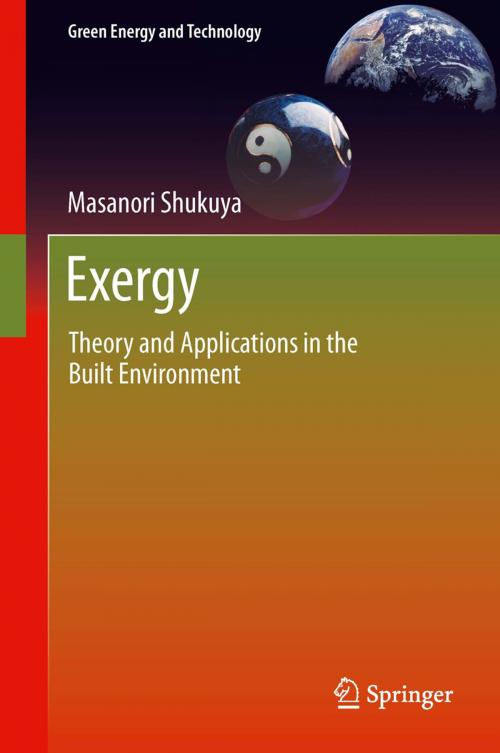Exergy
Theory and Applications in the Built Environment
Nonfiction, Science & Nature, Science, Biological Sciences, Environmental Science, Business & Finance, Management & Leadership, Management| Author: | Masanori Shukuya | ISBN: | 9781447145738 |
| Publisher: | Springer London | Publication: | November 5, 2012 |
| Imprint: | Springer | Language: | English |
| Author: | Masanori Shukuya |
| ISBN: | 9781447145738 |
| Publisher: | Springer London |
| Publication: | November 5, 2012 |
| Imprint: | Springer |
| Language: | English |
Many people, professionals and non-professionals alike, recognize that it is of critical importance to solve global energy and environmental issues. For this purpose, it is essential to have a scientific understanding of what is meant by the “energy” issue is and the “environmental” issue. The concept of “exergy” is a scientific concept that exactly fits.
The concept of ‘energy’ is a scientifically-well established concept, namely ‘to be conserved’. Then the question is what is really consumed. Exergy: Theory and Applications in the Built Environment is dedicated to answer this fundamental question by discussing the theory of “exergy” and by demonstrating its use extensively to describe a variety of systems in particular for built-environmental conditioning. Our immediate environmental space works within the flow of energy and matter in an “exergy-entropy” process, and the built environment can be designed with these energy & environmental issues in mind.
Exergy: Theory and Applications in the Built Environment introduces readers who are not familiar with thermodynamics to the concept of exergy with a variety of discussion on the built-environmental space such as heating, cooling, lighting, and others. Readers, including students, researchers, planners, architects and engineers, will obtain a better picture of a sustainable built-environment.
Many people, professionals and non-professionals alike, recognize that it is of critical importance to solve global energy and environmental issues. For this purpose, it is essential to have a scientific understanding of what is meant by the “energy” issue is and the “environmental” issue. The concept of “exergy” is a scientific concept that exactly fits.
The concept of ‘energy’ is a scientifically-well established concept, namely ‘to be conserved’. Then the question is what is really consumed. Exergy: Theory and Applications in the Built Environment is dedicated to answer this fundamental question by discussing the theory of “exergy” and by demonstrating its use extensively to describe a variety of systems in particular for built-environmental conditioning. Our immediate environmental space works within the flow of energy and matter in an “exergy-entropy” process, and the built environment can be designed with these energy & environmental issues in mind.
Exergy: Theory and Applications in the Built Environment introduces readers who are not familiar with thermodynamics to the concept of exergy with a variety of discussion on the built-environmental space such as heating, cooling, lighting, and others. Readers, including students, researchers, planners, architects and engineers, will obtain a better picture of a sustainable built-environment.















